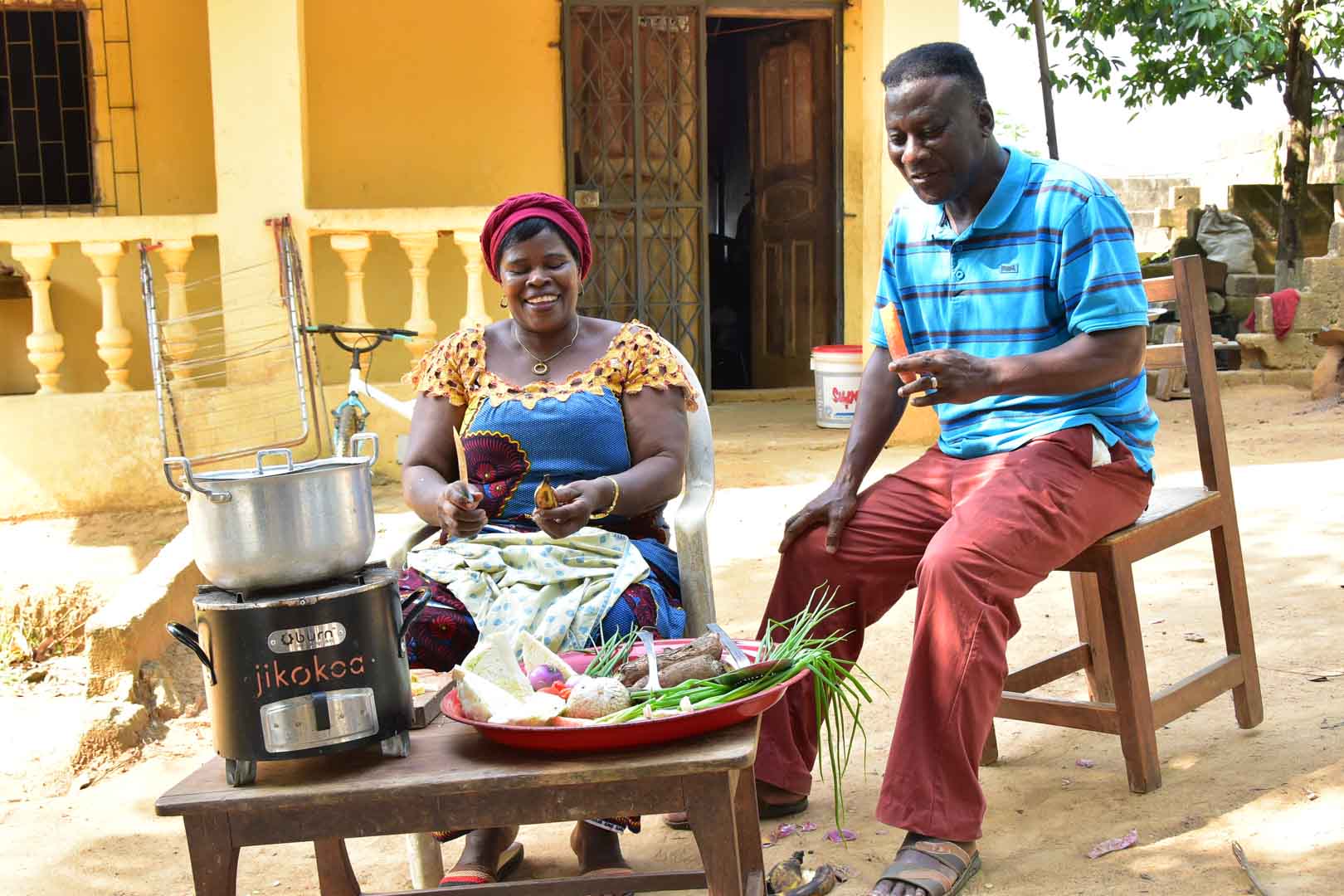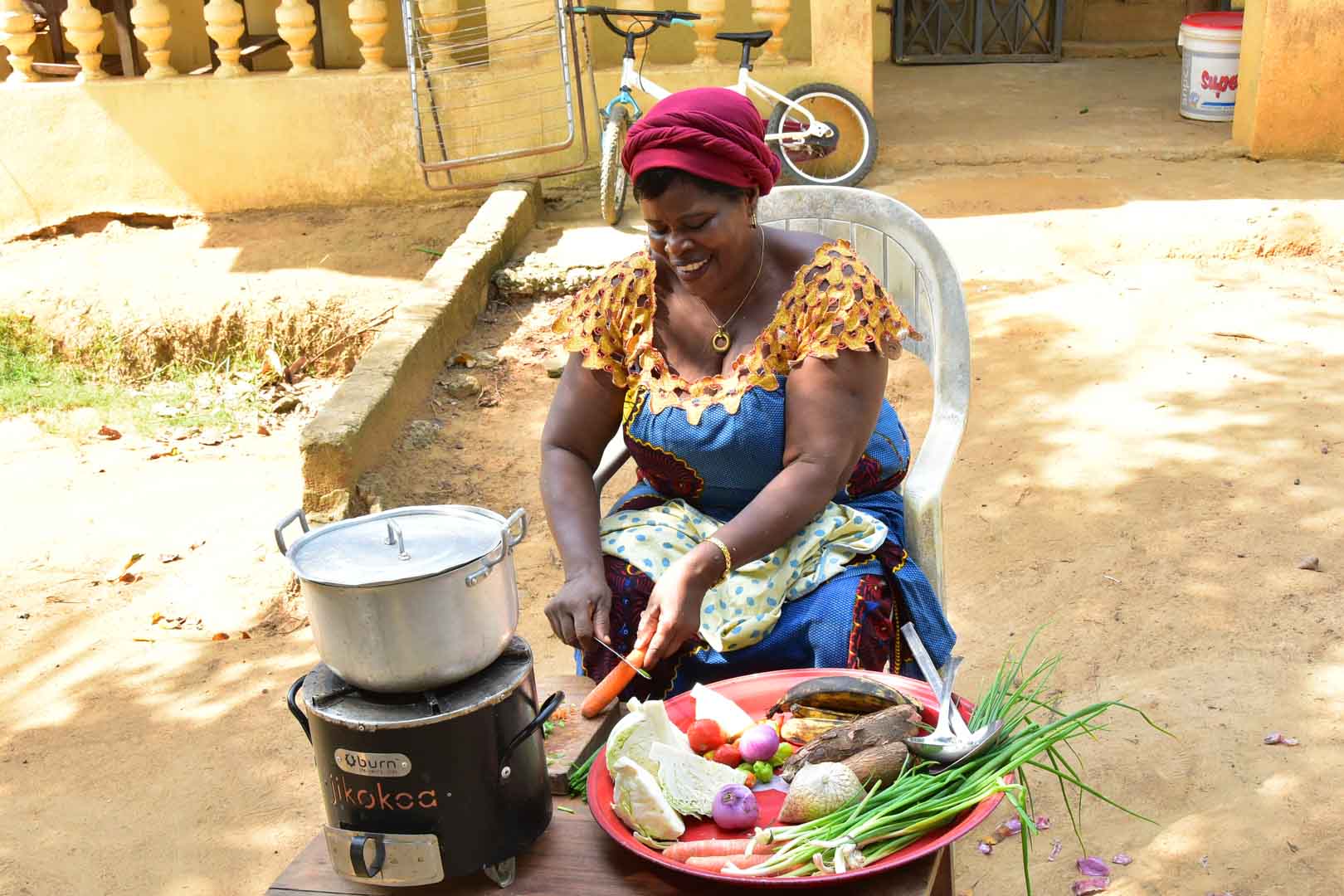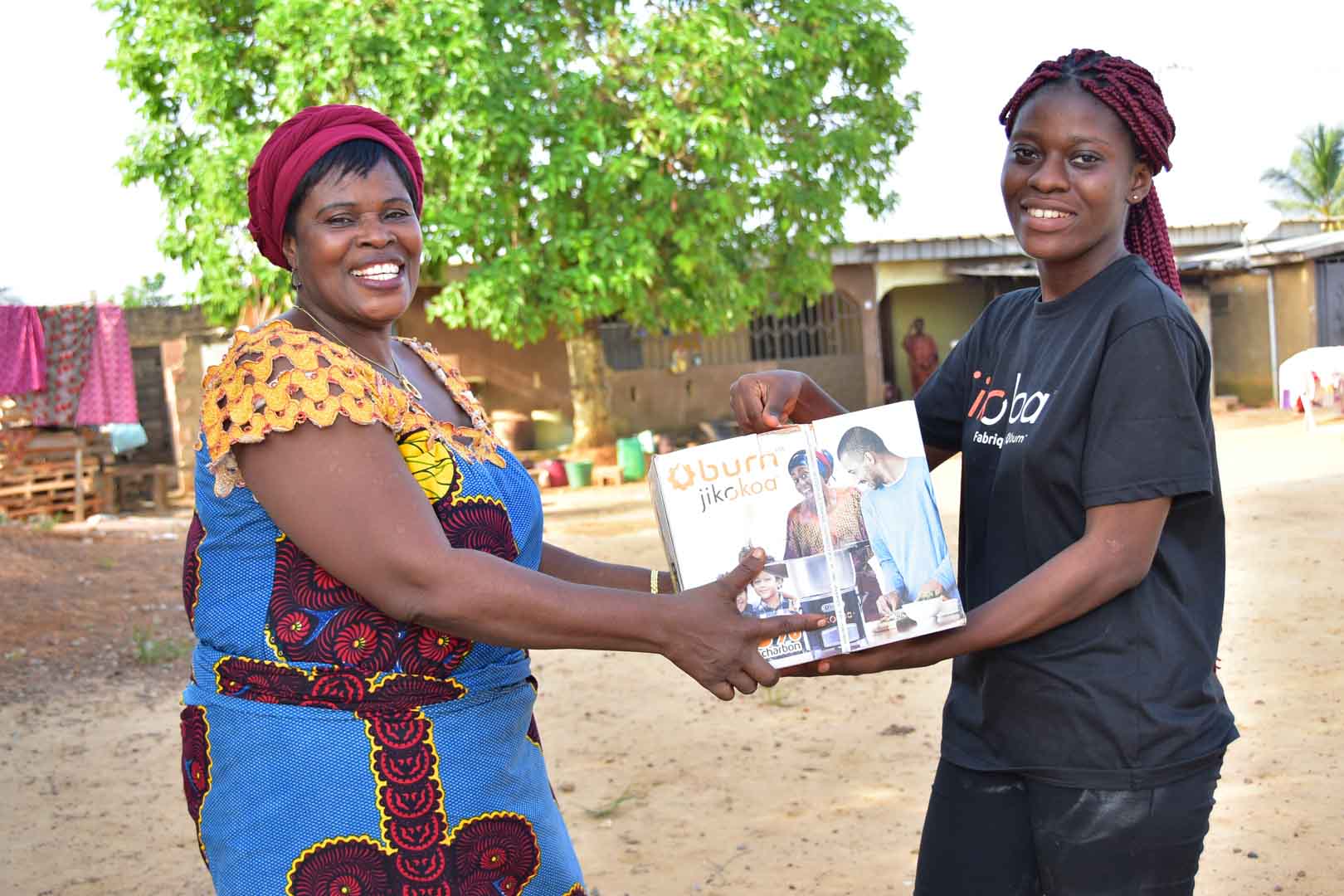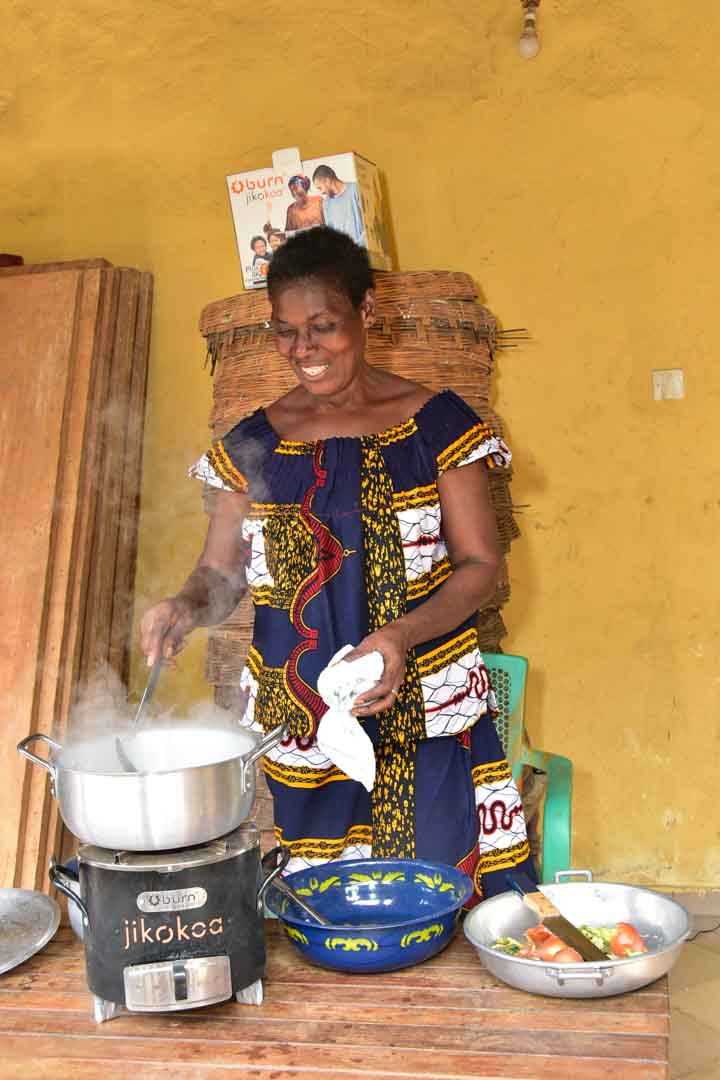Better living conditions for poor households
Many households in Sub-Saharan Africa rely on 3-stone fires or traditional cookstoves for cooking, consuming a lot of fuel, in particular non-renewable firewood and charcoal. The high biomass consumption leads to accelerated deforestation and land degradation, loss of soil fertility and soils’ reduced ability of water retention as well as releasing greenhouse gas emissions. Further, indoor air pollution through health damaging pollutants while combusting firewood and charcoal can result in severe lung and heart diseases, which especially affect women and children, who mostly carry out cooking activities.
This project is deploying improved cookstoves in urban and peri-urban areas of Côte d’Ivoire. This reduces the dependency on firewood as a fuel for the local community and increases the heat transfer efficiency, which results in the reduction of greenhouse gas emissions. Besides, the project contributes to a better economic and health situation of the families.
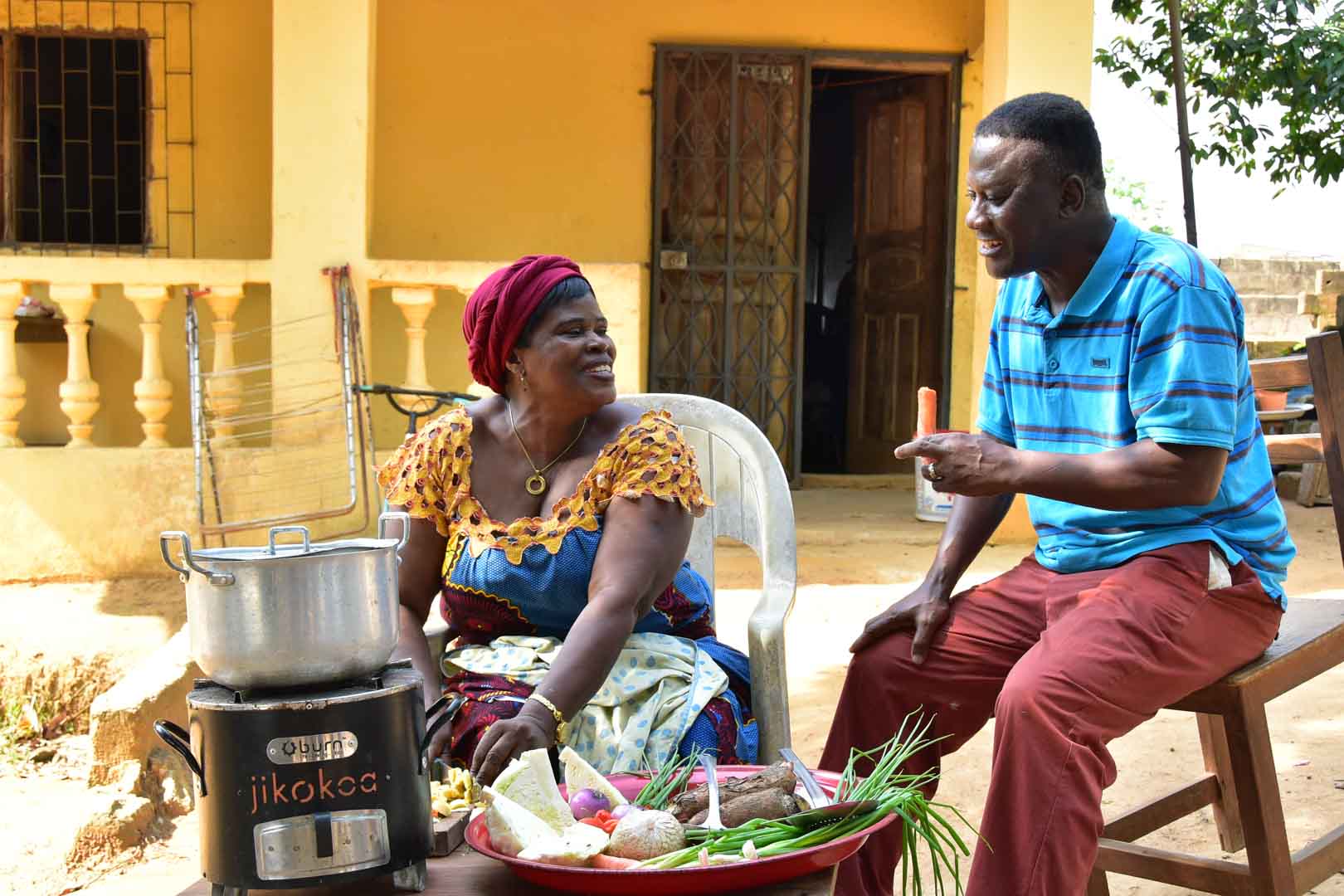
According to a statistic from the World Health Organization (WHO, 2024) around a third of the global population still relies on unsafe and environmentally harmful cooking methods. This includes, for example, cooking over open fires or using polluting cooking fuels, such as coal or kerosene. Improved cookstoves tackle this problem by using thermal energy more efficiently.
Depending on the model, an improved cookstove can reduce fuel consumption by up to 70 percent, which significantly saves CO2 emissions and can lower the pressure on local forests as less firewood needs to be harvested.
Improved cookstove projects allow the distribution of the - often simple - devices made from metal or clay to households, small enterprises or community facilities. Especially for households, this has an impact beyond the CO2 reduction: better indoor air quality decreases respiratory diseases and families can save time and money as less fuel is needed. Improved cookstoves projects in the ClimatePartner portfolio are registered with international standards.
Explore our projects
Biochar for Climate Action, Healthy Soils, and Better Harvests

A certified climate project combined with additional commitment

Expansion of renewable energy generation in Asia

Ceramic water filters save CO2 and improve health

Improved cookstoves worldwide – for better health and cleaner air

A certified climate project combined with additional commitment

Powering access to renewable energy in Africa

A certified climate project combined with additional commitment

Restored ecosystems remove carbon

Turning degraded farmlands into healthy ecosystems

Improved cookstoves - better for health and the environment









